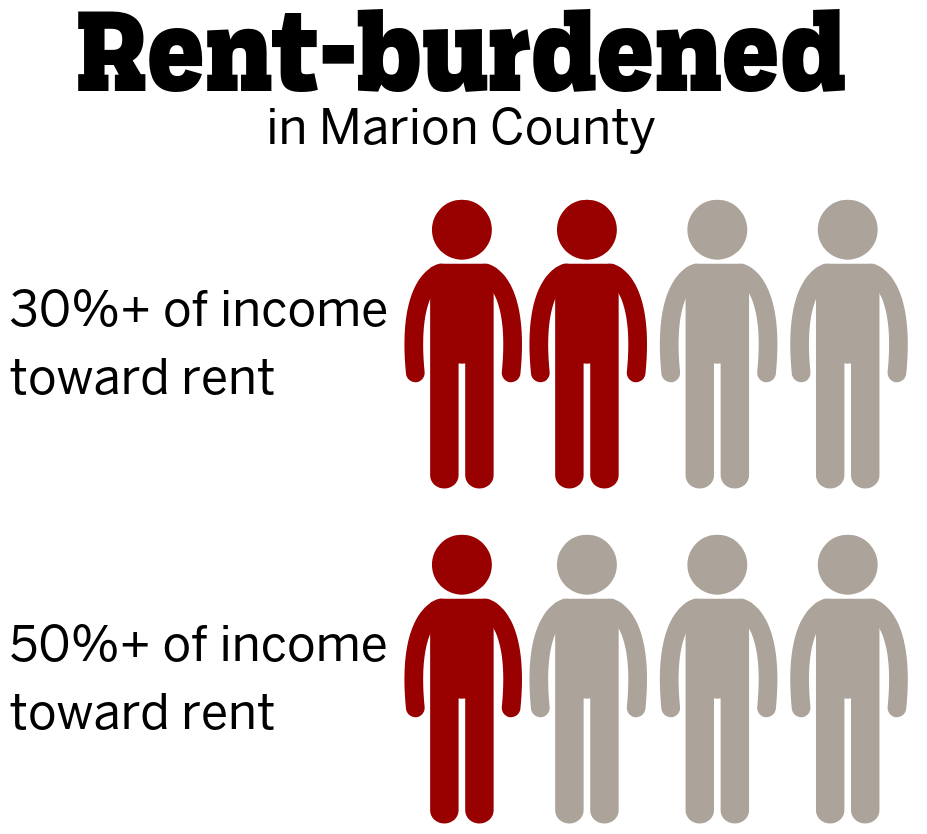INDIANAPOLIS – High rent burdens, stagnant incomes, and increasing rental costs contribute to unstable living situations for many renters in Marion County. That’s according to a new report from the Center for Research on Inclusion and Social Policy at the IU Public Policy Institute.
Researchers at CRISP examined data from the 2017 U.S. Census Bureau’s American Community Survey, and looked at the relationships between location, incomes, and race.
The U.S. Department of Housing and Urban Development defines housing cost burden as paying more than 30 percent of a household income toward rent or a mortgage. Those who pay more than 50 percent are considered severely burdened.
The report’s key findings about Marion County include:
- Renters occupy 46 percent of households, higher than state and national rates.
- Nearly half (49 percent) of renter households are rent burdened, compared to 21 percent of owner-occupied homes.
- Rent-burdened households tend to be concentrated in specific areas, including Center, Lawrence, Warren, and Wayne townships.
- Areas with more black and Hispanic/Latino renters have higher rent burdens, while areas with more white renters have lower rent burdens.
- From 2012 to 2017, the median household income in Marion County did not change substantially even though rent increased.
“Affordability is a predictor of homelessness, especially among renters,” says Breanca Merritt, Ph.D., founding director of CRISP. “Our work shows that renters in Marion County need more opportunities for better-paying jobs and more affordable rental units to ease the financial burden and have a more secure living situation.”
Merritt says their findings also demonstrate the need for additional research about the relationship between rental costs and race, as well links between rent burdens and evictions, and opportunities to increase quality, affordable rental housing.



